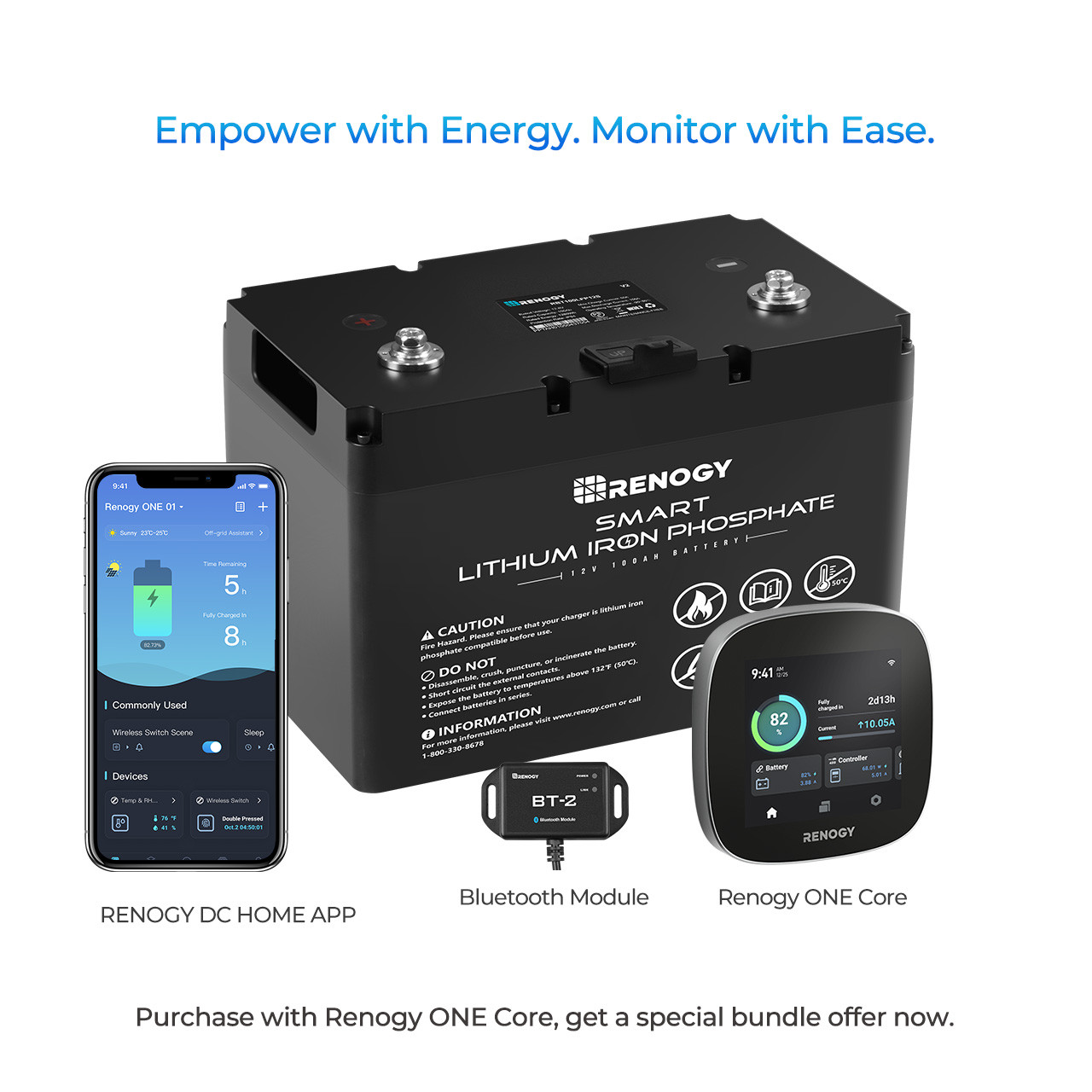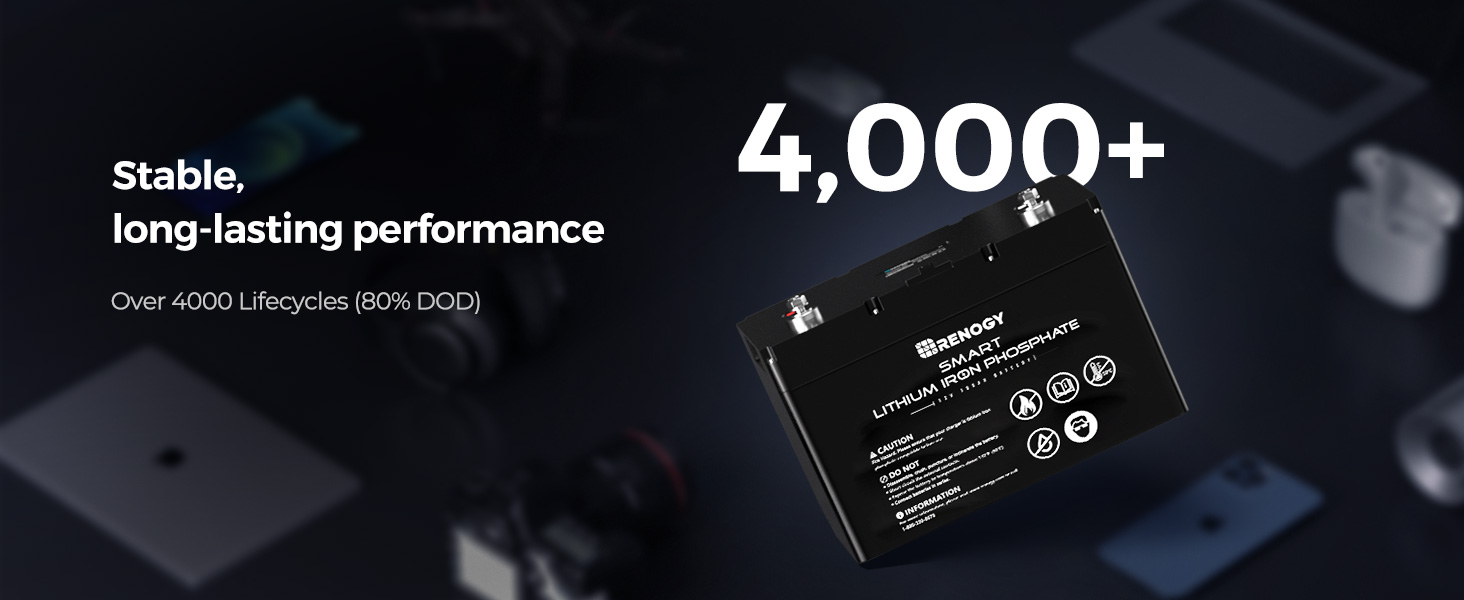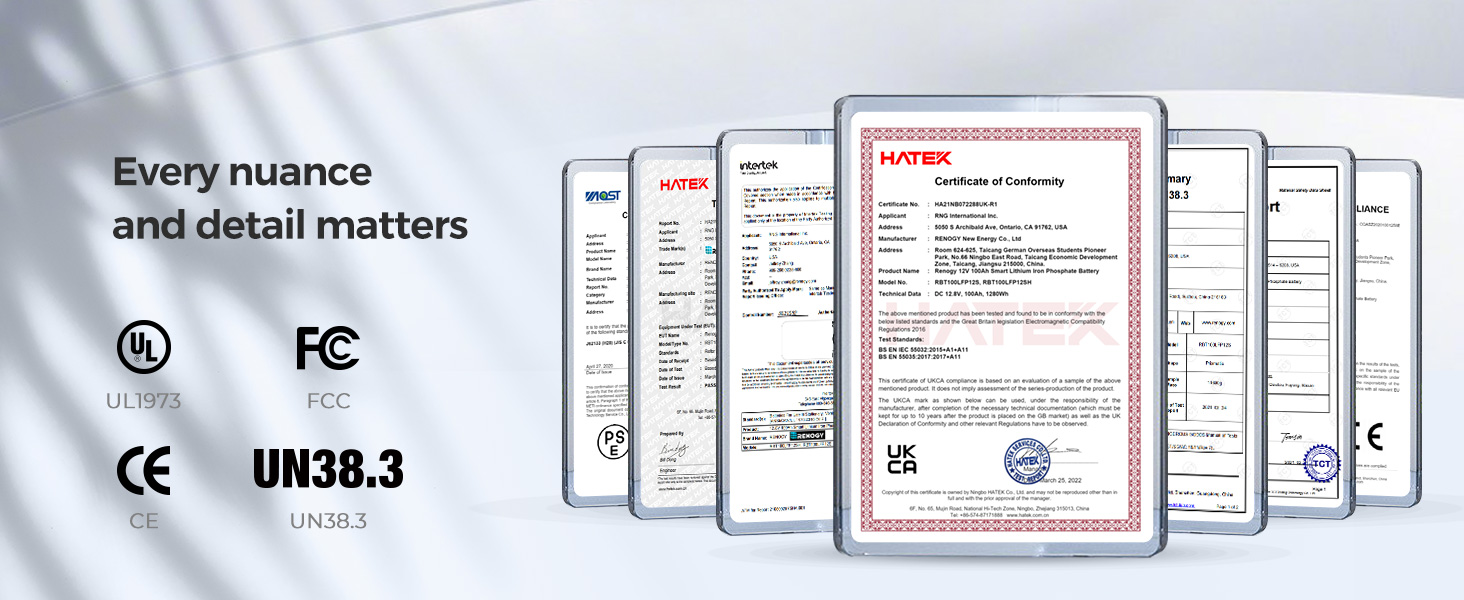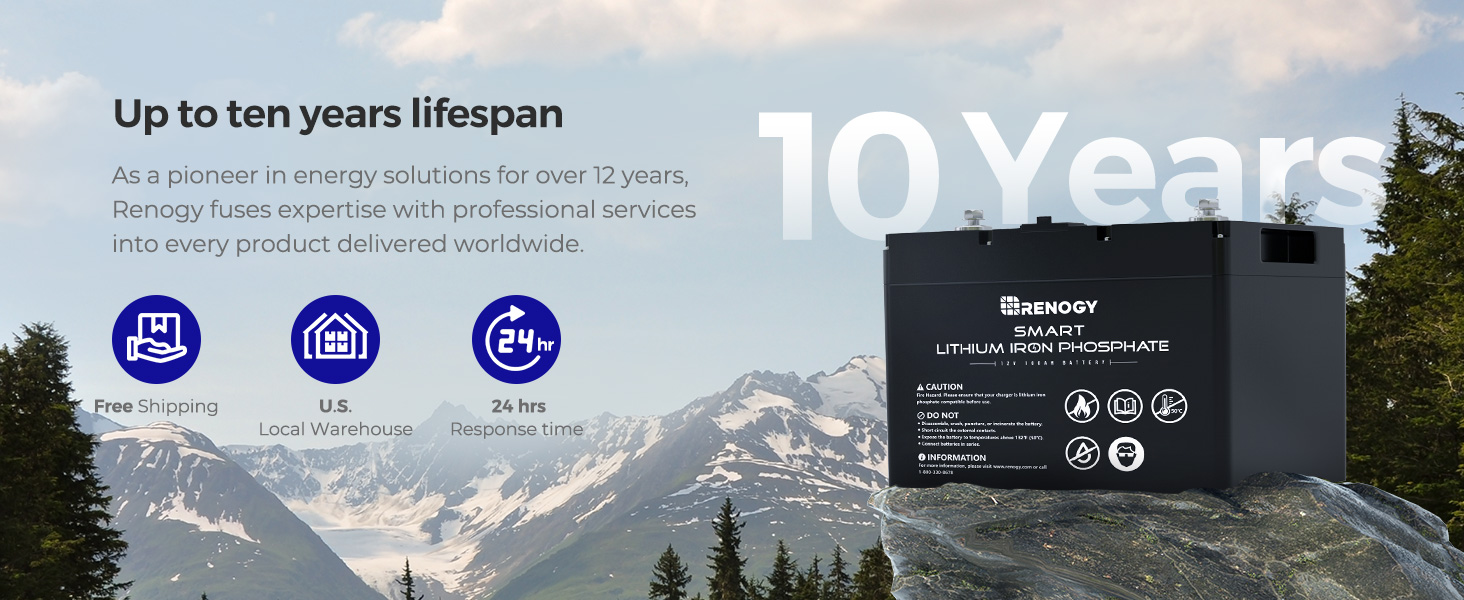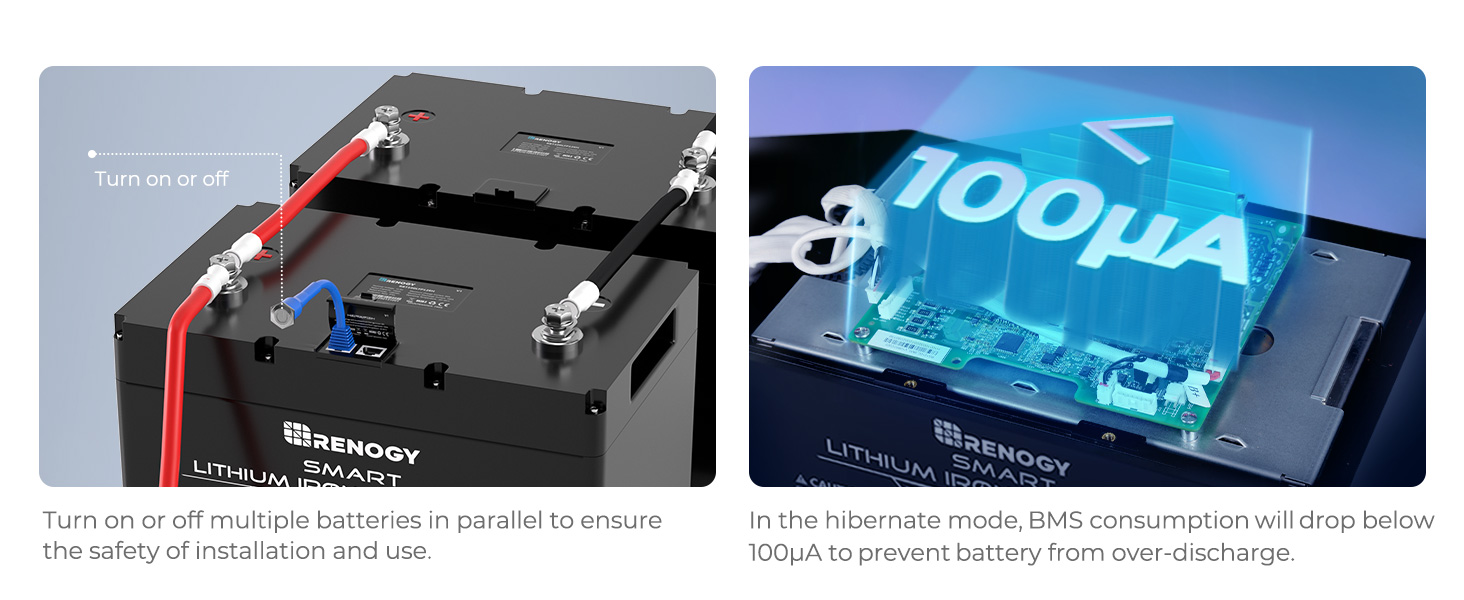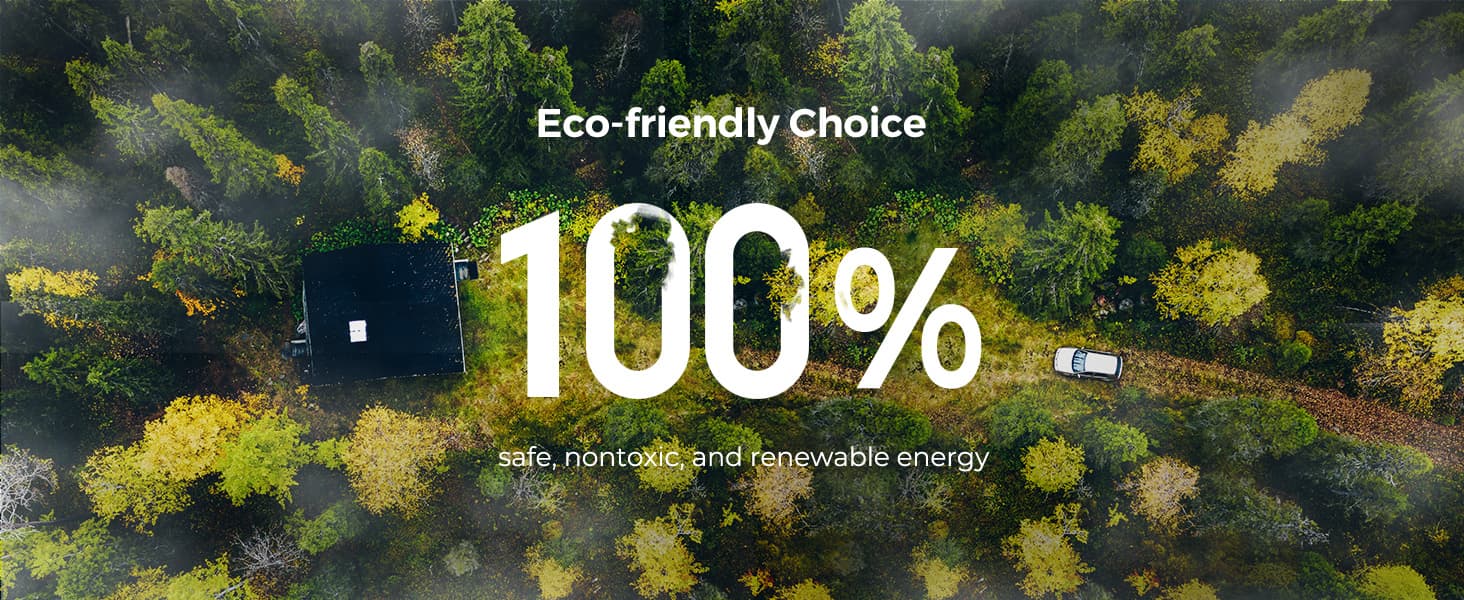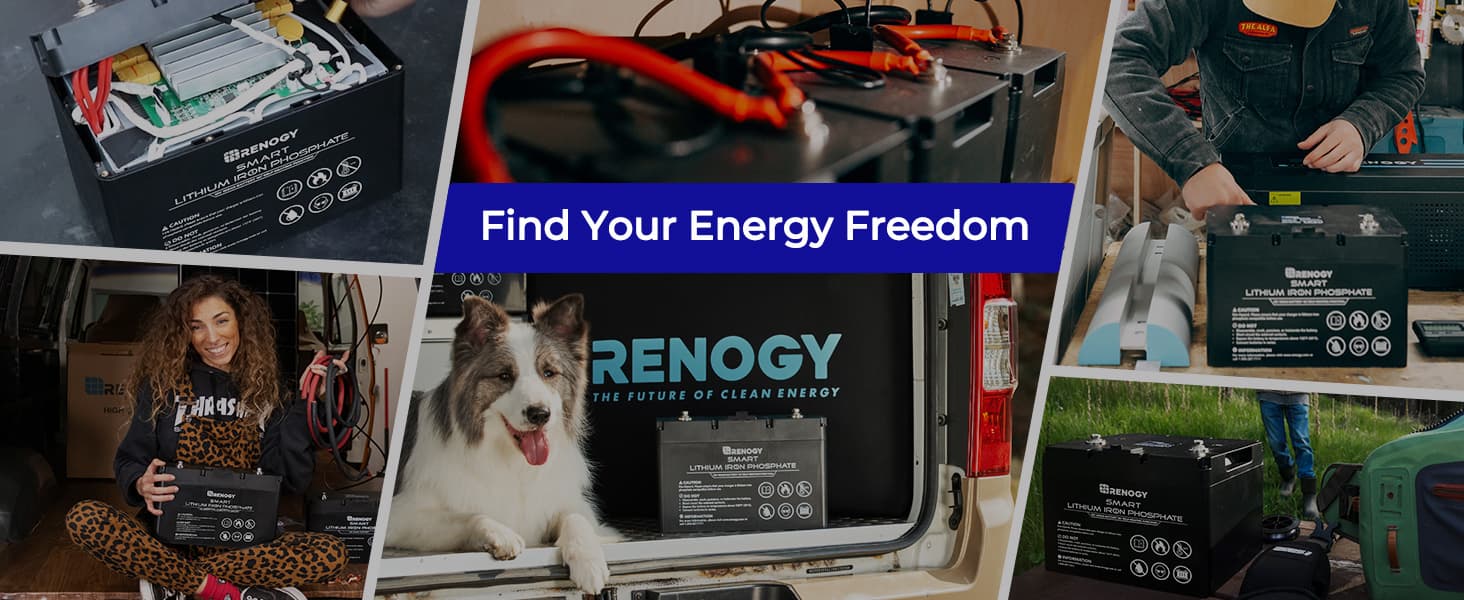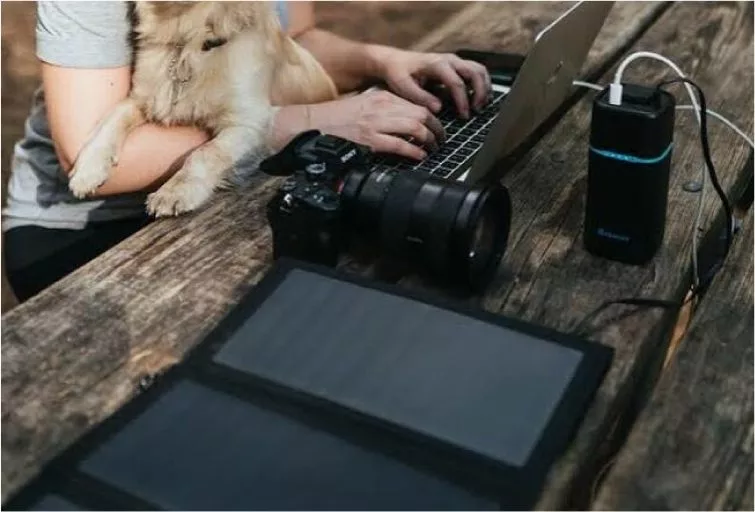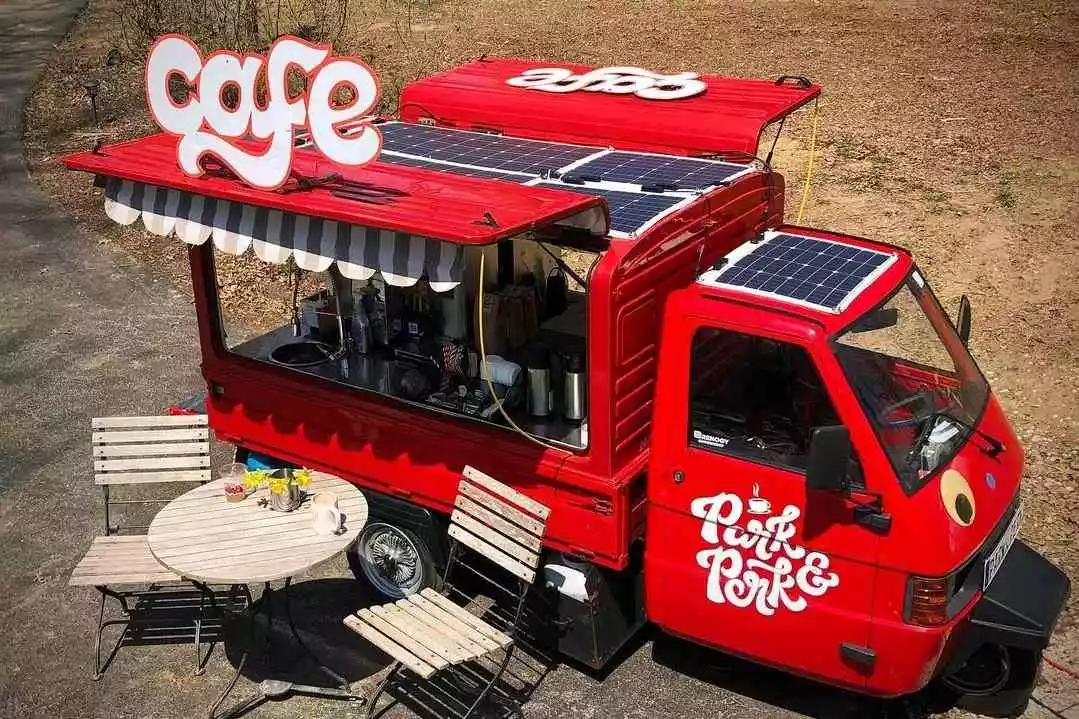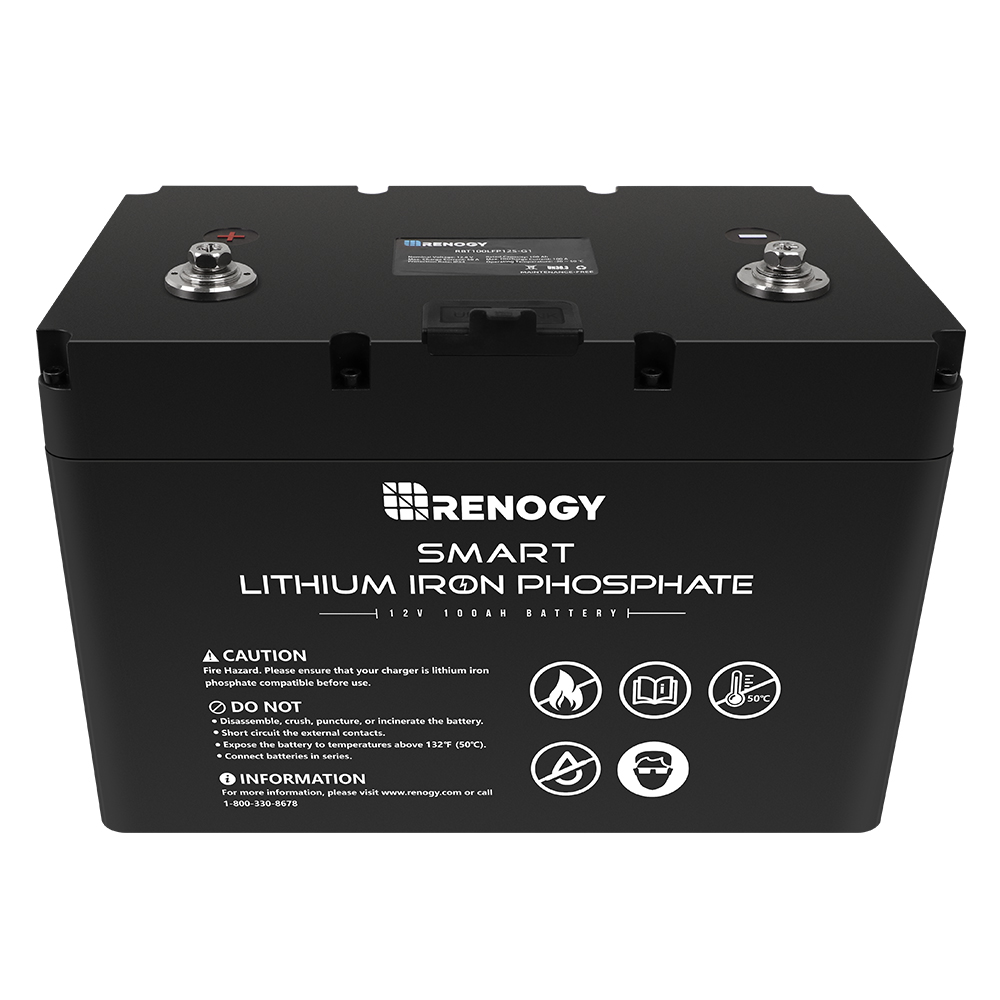Renogy 12V 100Ah Smart Lithium Iron Phosphate Battery The Renogy Smart Lithium Iron Phosphate Battery enables auto-balance among parallel connections and provides more flexibility for battery connection. The integrated smart battery management system (BMS) not only protects the 12V 100Ah LiFePO4 battery from various abnormalities but also monitors and manages the charging/discharging process. The state-of-the-art battery cells ensure a long cycle life and exceptional discharge performance. If you’re searching for a deep cycle battery for caravan, cabin, or marine use, this lightweight, auto-balanced, ultra-safe, long-cycle-life lithium-ion battery is the perfect solution for you!
Package Includes
|
12V 100Ah Smart Lithium Iron Phosphate Battery
1 x
|
Activation switch and bolts
1 x
|
| Renogy 12V 100Ah Smart Lithium Iron Phosphate Battery | |||
|---|---|---|---|
| Operation Specifications | Mechanical Specifications | ||
| Rated Capacity | 100 Ah | Dimensions |
11.4 x 6.8 x 7.4 inch /289 x 172 x 188 mm
|
| Nominal Voltage | 12.8 V | Weight | 26 lbs. / 11.8 kg |
| Voltage Range | 10~14.8 V | Charge Temperature | 32~131°F/ 0~55°C |
| Cycle Life(0.2C,25℃) | 80%DOD 4000 Cycles | Discharge Temperature | -4~140°F/ -20~60°C |
| Maximum Continuous Charging Current | 50 A | Protection Rate | IP54 |
| Maximum Continuous Discharging Current | 100 A | Communication Port | RJ45 (RS485 Protocol) |
| Dischaging Voltage Range | 10V~14.4V | Insulation Resistance | 500V DC, ≥ 10 MΩ |
| Standard Operation Temperature | 25℃±5℃ | Certifications | |
| Storage Temperature | -13~149℉ / -25~65℃ | UN38.3 | YES |
| Connection Method | Parallel | MSDS | YES |
| Accessories | UL 1642(Lithium Cell) | YES | |
| M8 Bolts | *2 | Warranty | |
| Activation switch | *1 | 5-year prorated warranty | |
1. What are Renogy battery’s greatest advantages?
2. What is the specific soft package cell mentioned just now?
3. What does the external battery switch do?
4. How long will your battery last?
5. How many batteries can I connect to at most?
6. How to keep a Lithium-iron Phosphate battery healthy at low temperatures?
7. What do I need know to connect multiple batteries in parallel?
When you design to connect multiple batteries in parallel, please keep the length of ALL cables consistent (from the positive end to the negative end). Battery cables (sold separately) should be appropriately sized to handle the expected load. Keep the connection tight by using the appropriate number of washers to allow for as much as possible thread engagement between the terminal, cable lugs, and busbars, without bottoming out the terminal bolt. And it is best to use flexible busbars or dedicated cables to connect batteries together.
Note: DO NOT connect batteries in series. DO NOT connect batteries with different chemistries.
















